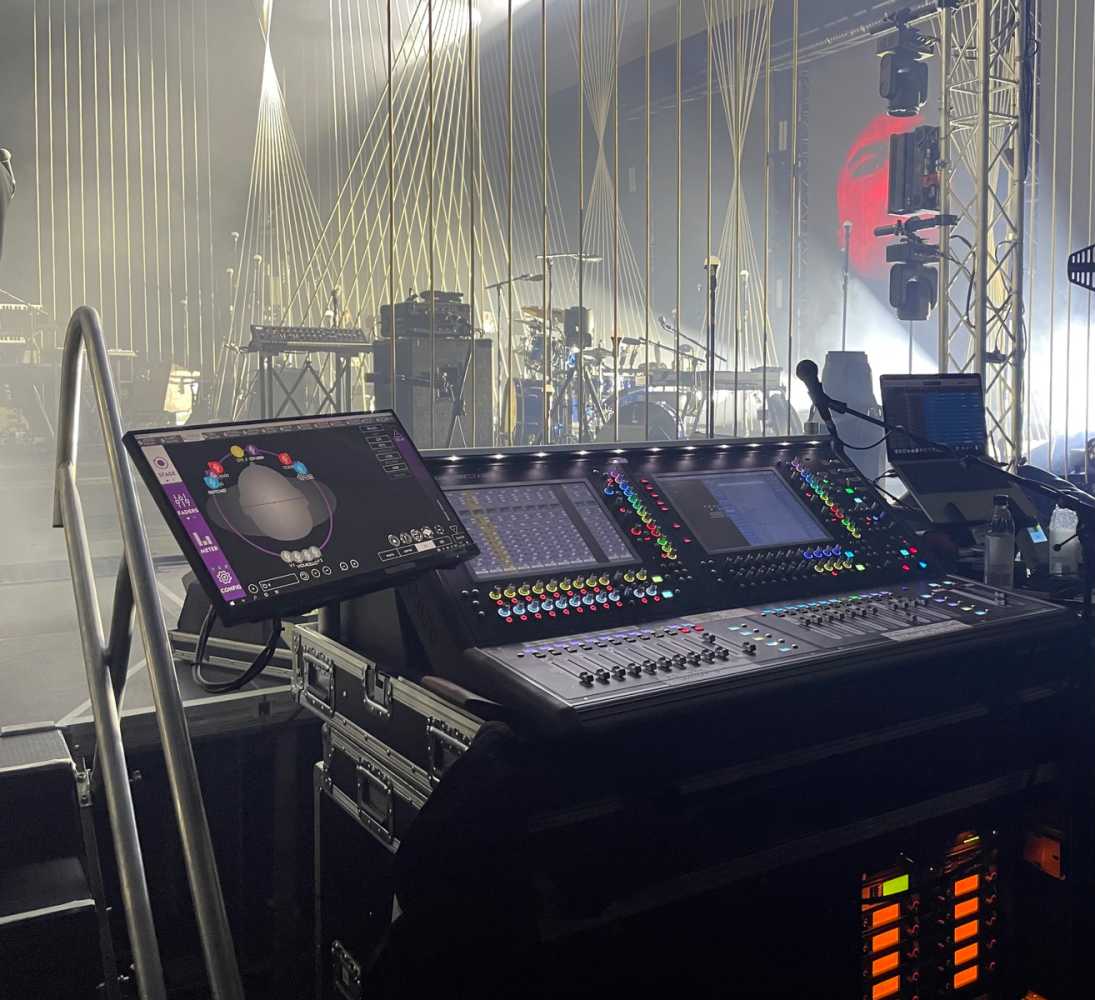Sigur Rós rely on KLANG and DiGiCo
- Details

The band’s monitor engineer, Throstur Albertsson, deployed KLANG’s immersive in-ear monitor mixing solution, using a DMI-KLANG card-equipped DiGiCo SD12 96 digital mixing console, supplied by new UK pro-audio equipment rental and support provider, 22live.
Albertsson was recommended to Sigur Rós in mid-2021, as they were starting to plan their 2022 tour. “As the tour was going out for many months, I had a few meetings with the band to make sure the fit would be a good one, both for them and me,” recalls Albertsson. “At the time, my mixing abilities were secondary. It was all about seeing if we had that perfect ‘vibe’ between us.”
Off to a good start, the band commenced with rehearsals in Iceland mid-March, with Albertsson using the time as an opportunity to understand their sound preferences and prepare the equipment for the tour.
“DiGiCo’s SD12 96 console was already in full use by the band, together with an SD-Rack fitted with 32-bit in/out cards,” Albertsson explains. “Additionally, the band was using an IEM system and wedges as part of their standard setup.”
Mid-tour, Albertsson decided to investigate KLANG fand was recommended to talk to Pasi Hara, a monitor engineer who was one of the first adopters of the KLANG:fabrik and had upgraded to a DMI-KLANG card, fully integrated into DiGiCo Quantum and SD-Range consoles. “I spoke with Pasi. In short, he said, ‘once you try it, it will be hard to mix without it’. That proved to be true.” says Albertsson.
Since Albertsson was already using a DiGiCo SD12, it made sense for him to use the DMI-KLANG. “I get 64 channels into my KLANG processor and I can do 16 mixes with a latency of no more than 0.25ms. It worked smoothly and I found that implementing it with my existing show file was not a big deal, and my Snapshots would hold the information about placements and level for KLANG, with the setup the only thing stored on the card itself, which would include Groups, labels, etc,” he explains.
Woodhead put a call in to Paul Timmins, 22live’s Hire Director, to see how feasible it would be to supply KLANG for the remainder of the tour. “I was very happy to add KLANG to the spec,” comment Timmins. “For 22live, we were already fully immersed in the understanding that KLANG was likely to be in demand going forwards and we had fortunately already committed to the product ordering four DMI-KLANG for stock.”
Albertsson received his DMI-KLANG card-equipped DiGiCo SD12 96 digital mixing console at the Backstage Centre in London, just before the first show of the EU leg in September. “Once I was fully set up and ready, I started testing my ideas. I was completely blown away,” he reports.
The integration of DMI-KLANG with DiGiCo console was another revelation for Albertsson, and gave him full confidence that he could always go back to the same setup as before by simply having a macro that would disable KLANG, with the show still running. “I never actually did that, but it was comforting to know that I could do it without messing things up,” he adds.
22live was also instrumental in making sure everything worked well. “They take such good care of us that we almost are not allowed to turn on our equipment unassisted,” jokes Albertsson. “They sent some of their team to help with the setup, and I could also liaise with David Bigg [Product Specialist, DiGiCo] for any additional questions.”
















